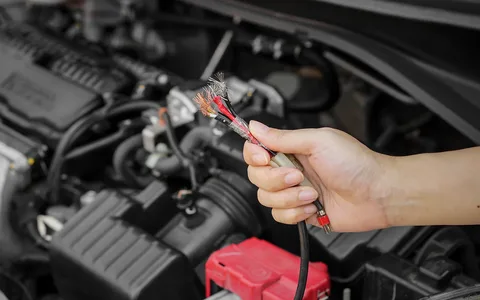A Comprehensive Guide to Prevention, Diagnosis, and Repair
Owning a vehicle is both a convenience and a responsibility. While modern cars are built with advanced technology and durable materials. They are not immune to faults and mechanical issues. Understanding common car faults not only helps you stay ahead of potential problems but also saves you time and money. Whether you’re a new driver or a seasoned motorist. This comprehensive guide will help you identify. Prevent. And resolve the most common car issues. In line with automotive maintenance best practices.
Understanding Common Car Faults: Why They Matter
Common car faults can stem from wear and tear, poor maintenance, or even environmental factors. Ignoring minor issues can lead to significant. Costly repairs later. The goal of this article is to help you recognize early warning signs. Understand root causes, and know when to seek professional help.
Dead Battery
📍 Causes:
- Leaving headlights or interior lights on
- Old battery (typically over 3–5 years)
- Faulty alternator
- Extreme weather conditions (hot or cold)
🛠️ Symptoms:
- Engine doesn’t start or cranks slowly
- Dashboard lights flicker or go dim
- Electrical components malfunction
✅ Prevention & Fix:
- Regularly test battery health (at least once a year)
- Ensure lights are turned off when the vehicle is off
- Replace battery every 3–5 years
Expert Tip: Use a multimeter to check battery voltage. A fully charged battery should read around 12.6 volts.
Engine Overheating
📍 Causes:
- Low coolant level
- Broken water pump
- Radiator blockage or leaks
- Faulty thermostat
🛠️ Symptoms:
- Temperature gauge rising to red zone
- Steam coming from under the hood
- Sweet-smelling smoke
✅ Prevention & Fix:
- Check coolant levels monthly
- Flush radiator periodically
- Have a mechanic inspect the cooling system if overheating recurs
Did You Know? Overheating can warp engine components and lead to costly repairs like head gasket replacement.
Brake Issues
📍 Causes:
- Worn brake pads or rotors
- Low brake fluid
- Leaking brake lines
🛠️ Symptoms:
- Squeaking or grinding noise
- Soft or spongy brake pedal
- Car pulling to one side when braking
✅ Prevention & Fix:
- Have brakes inspected every 10,000 to 15,000 miles
- Replace brake pads regularly
- Bleed brake lines to remove air
Safety First: Never ignore brake warning lights or unusual brake noise—faulty brakes are a major safety hazard.
Flat or Worn-Out Tires
📍 Causes:
- Driving over sharp objects
- Underinflation or overinflation
- Uneven wheel alignment
🛠️ Symptoms:
- Loss of air pressure
- Vibration while driving
- Tread wear patterns
✅ Prevention & Fix:
- Check tire pressure monthly
- Rotate tires every 5,000 to 8,000 miles
- Replace tires when tread depth is below 1.6mm
Pro Tip: Use the penny test—insert a penny into tread grooves; if you can see all of Lincoln’s head, it’s time to replace the tire.
Faulty Alternator
📍 Causes:
- Worn-out bearings or brushes
- Broken pulley
- Electrical faults
🛠️ Symptoms:
- Dim lights
- Dead battery despite recent replacement
- Battery warning light on the dashboard
✅ Prevention & Fix:
- Have alternator tested during routine maintenance
- Listen for unusual whining or grinding noises from the engine
Transmission Problems
📍 Causes:
- Low or dirty transmission fluid
- Mechanical wear and tear
- Electronic sensor issues
🛠️ Symptoms:
- Difficulty shifting gears
- Slipping gears
- Burning smell
✅ Prevention & Fix:
- Change transmission fluid every 30,000 to 60,000 miles
- Address transmission slips or delays immediately
Fact: Automatic transmission repairs can cost upwards of $2,000—regular maintenance is key.
Check Engine Light On
📍 Causes:
- Oxygen sensor failure
- Loose or faulty gas cap
- Spark plug/ignition coil issues
- Mass airflow sensor malfunction
🛠️ Symptoms:
- Light remains steady or blinks
- Engine performance drops
- Poor fuel economy
✅ Prevention & Fix:
- Use OBD-II scanner to diagnose issue
- Don’t ignore flashing check engine light—this signals a serious issue
Exhaust System Issues
📍 Causes:
- Rust or corrosion
- Damaged muffler or catalytic converter
- Leaking exhaust manifold
🛠️ Symptoms:
- Loud engine noise
- Decreased fuel efficiency
- Emission test failure
✅ Prevention & Fix:
- Get your exhaust system inspected annually
- Replace rusted components early
Note: A failing catalytic converter can cost over $1,000 to replace.
Preventative Maintenance Checklist
| Task | Frequency |
|---|---|
| Oil Change | Every 3,000–7,500 miles |
| Tire Rotation | Every 5,000–8,000 miles |
| Brake Inspection | Every 10,000–15,000 miles |
| Battery Check | Annually |
| Transmission Fluid Check | Every 30,000–60,000 miles |
| Coolant Check | Every 12,000 miles or annually |
Importance of Diagnostic Tools
Modern vehicles come equipped with sophisticated onboard diagnostics (OBD). A simple OBD-II scanner can provide insights into various systems and fault codes. Helping you identify issues before they escalate. These tools are particularly useful for DIY enthusiasts and can save you a trip to the mechanic.
When to See a Mechanic
While some minor issues handled at home. There are situations where professional help is non-negotiable:
- Persistent dashboard warning lights
- Fluid leaks
- Transmission slipping
- Brake system issues
- Engine knocking or unusual noises
Trusting a certified technician ensures that repairs are done safely and in line with manufacturer standards.
Environmental Considerations
Faulty cars don’t just cost more—they also harm the environment. Leaking fluids. Inefficient fuel combustion. And defective emissions systems increase your carbon footprint. Keeping your vehicle in good working order contributes to a cleaner. Greener planet.
Final Thoughts: Knowledge Is Power
Understanding the most common car faults empowers you as a vehicle owner. It helps you spot warning signs early, communicate more effectively with your mechanic, and potentially avoid costly repairs. By following routine maintenance schedules and being alert to changes in your vehicle’s performance, you can drive safely. Save money. And extend your car’s lifespan.












